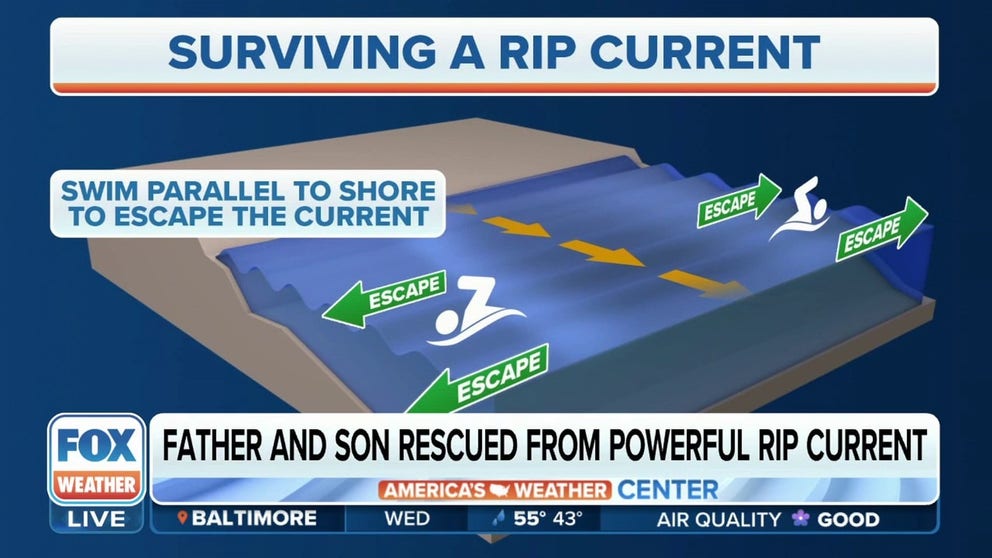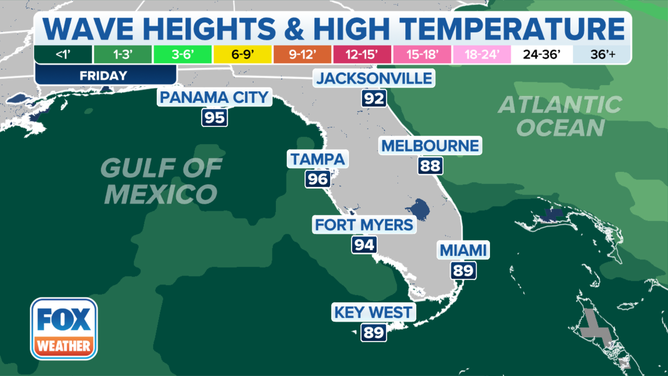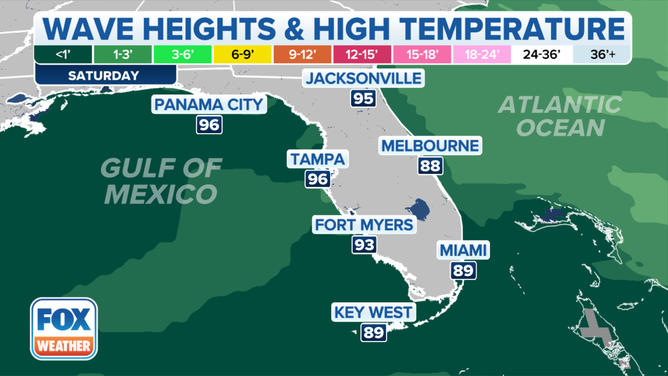Florida rip current dangers continue into July 4th weekend after nearly a dozen recent drownings
Before dipping into the Atlantic or the Gulf, beachgoers need to be aware of the rip current risks, in particular on Florida's Emerald Coast.
Staying safe around rip currents during beach season
American Lifeguard Association spokesperson Wyatt Werneth provides the best rip current safety tips after a father and son were rescued in Florida.
Rip current risks will last through the Fourth of July weekend after an already deadly start to the summer in Florida from dangerous currents.
Heading into the weekend, Rip Current Warnings are in place for northeast Florida beaches and beaches along the Florida Panhandle, where dangerous rip currents are expected through Thursday night.
The rip current threat will continue through Sunday, with the highest risk in Northeast Florida near Jacksonville and on the Emerald Coast near Panama City Beach.
A moderate threat will remain in the Panhandle region and on the East Coast of Florida down to West Palm Beach.
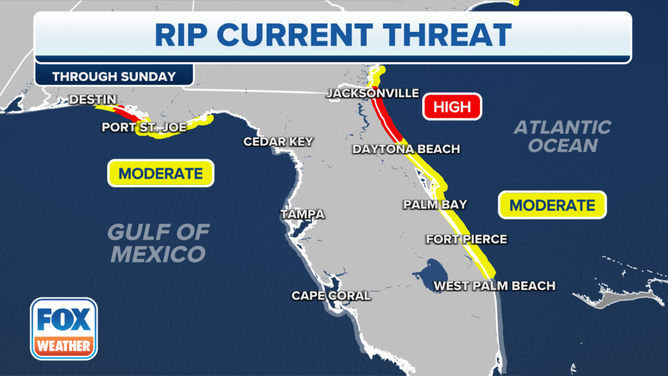
Current rip current threat during the Fourth of July weekend.
(FOX Weather)
With scorching temperatures across the Southeast, the beach will likely be a popular choice for July Fourth, as it is every year.
The FOX Forecast Center has forecast high temperatures in the high 80s and mid-90s through Saturday.
More rip current fatalities on Florida's Gulf Coast
Before dipping into the Atlantic or the Gulf of Mexico, beachgoers must be aware of the rip current risks, particularly on Florida's Emerald Coast, where more beach fatalities have been reported this year than any other U.S. beach.
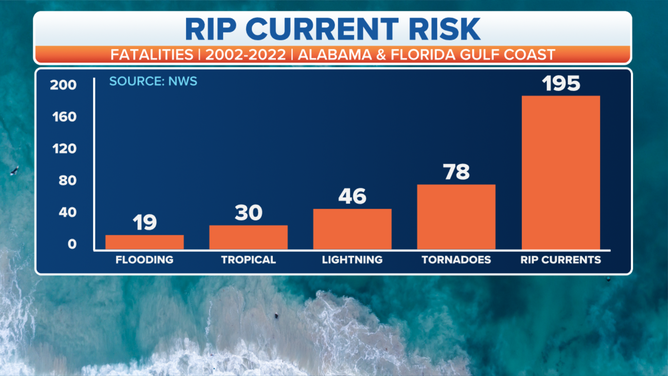
This graphic shows the number of fatalities attributed to rip currents along the Gulf Coast in Alabama and Florida between 2002 and 2022.
(FOX Weather)
According to the National Weather Service, rip currents have caused more fatalities on the Alabama and Florida Gulf Coast than any other weather event in the last 20 years.
NOAA AIMS TO KEEP BEACHGOERS SAFE WITH NEW LIFE-SAVING RIP CURRENT FORECAST MODEL
Seven people have died on the Emerald Coast this year from rip current-related drownings, all of which happened in June. Three in one day, according to FOX 35 in Orlando.
Rip currents are powerful channels of water that move out to sea and can be found in areas where waves aren't breaking, according to the NWS.
If caught in a rip current, swim parallel to the beach and not against the rip current. If you can't escape the current, try to float. Once the current lessens, you can swim back to shore.
What beach warning flags mean
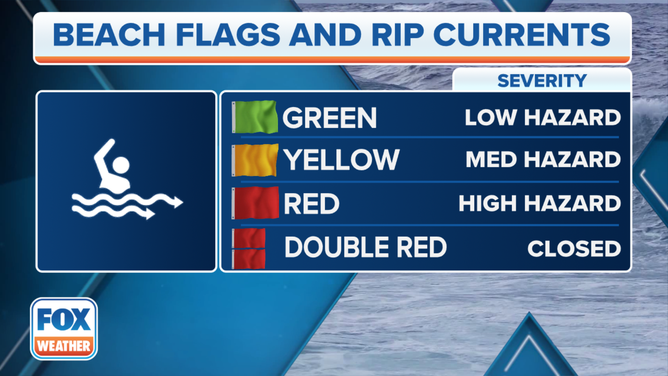
Know these rip current flags when you go to the beach.
(FOX Weather)
The graphic above shows the possible flags lifeguards fly when there is a rip current risk or dangerous marine life in the area.
- Double red flag: Very high hazard, water closed to public.
- Red flag: High hazard, high surf, strong currents.
- Yellow flag: Medium hazard, moderate surf and/or strong currents.
- Green flag: Low hazard, calm conditions, caution still advised.
- Purple flag: Dangerous marine life.
